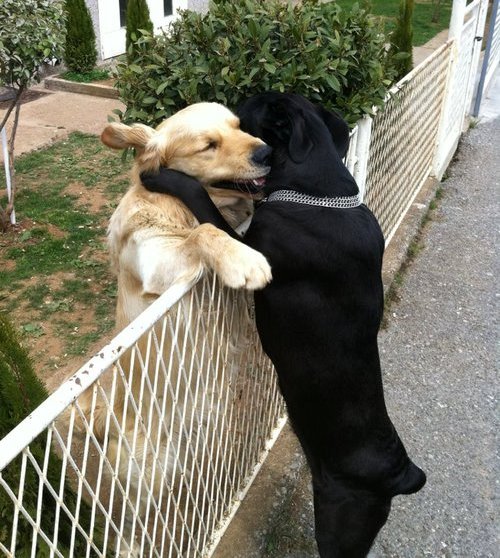
“Hello Harry, how was work today? Tough day? Can I buy you a kibble?” said every dog in a study.
It is clear that dogs consider humans part of their family and humans consider dogs part of theirs. But how do dogs see other dogs? Do they separate other dogs the way we separate people? In other words, do they differentiate between family dogs, friend dogs, acquaintance dogs, and stranger dogs the way we do other people?
Other than maternal behavior, it was assumed for centuries that only humans engaged in behavior that was “other regarding” or “pro-social;” meaning we gave to others at the expense of ourselves. Of course, we now know that humans are simply an extension of the animal kingdom: we evolved side by side and share a common ancestor. So it is no surprise that a recent study which looked at whether dogs differentiated between family/friend dogs and stranger dogs by offering them some of their food determined that they do.
Dogs were tested side-by-side to see if they would share their food by essentially pushing a lever. They were given several options: share their food with no one else there, with a familiar dog there, with a familiar dog who could not access the food, and with a stranger dog. All the dogs were friendly. The result? Dogs were most likely to share with the familiar dog when she or he was able to access the food.
In other words, they knew when their buddy could get the food and when they couldn’t. They knew when the dog was a friend vs. a stranger dog. And they were willing to share with friends more than strangers but only if the friend would partake of their largesse.
Combined with other studies that show:
- Dogs know the difference between dogs and non-dogs no matter how different they look from themselves;
- Dogs grieve upon the death of others, including the death of other dogs and humans;
- Dogs have positive emotions, like love, and the human-level sentience of a child;
And the conclusion is inescapable: dogs are people, too.
The full study is here.
————-
Have a comment? Join the discussion by clicking here.